U.S. Department of Transportation
Federal Highway Administration
1200 New Jersey Avenue, SE
Washington, DC 20590
202-366-4000
The technical part of the visit to Berlin included:
A representative from the German Transport Ministry stated: "Germany may have a different view of the federal government's role in ATIS than the USA." The Germans think they are less directly involved in the development of systems.
The scan team discussed four issues:
Traffic, including the East German expansion, has grown 50 percent since 1990. A further 60 to 64 percent increase is expected by 2015. The growth cannot be handled solely by traditional infrastructure alone, and telematics is considered a key component. For that reason, the Transport Ministry created a Telematics Division in 1995. It is trying to manage expectations on telematics benefits. An intermodal, interlinked network is the goal. The Ministry believes in strong public-private coordination.
In 1995, the Transport Minister convened a high-level roundtable to focus on:
The Ministry's Telematics Division budget is much smaller than the telematics budget in the United States The concept is that the public sector will provide data for telematics. A joint public-private partnership has evolved to manage the program. The roundtable meets one to two times per year. Last year's meeting to discuss the impact of e-commerce on traffic volumes was attended by 30 participants. The government provides directives, guidelines, and model contracts. For example, the following guidelines dictate how to develop a navigation system:
The government typically establishes performance-based guidelines. To date it has only had to adjust one legislative act (a slight change in the data protection act). Cooperation between the federal and state governments is considered very important. One aspect of such cooperation is a uniform automatic emergency call system, which is believed to be able to prevent 1,000 casualties per year.
Greater than 1,700 km of the German freeway system are under the Freeway Management System (stretch control--in cases of traffic congestion, alternative routes are recommended to drivers). More than 850 km of the freeways are under VMS control (active control). The Ministry will continue to support small/medium companies in transport telematics. The Galileo satellite location system is an area of strong interest within the Telematics Division. National resources are administered by states for infrastructure investment. With regard to standards, states follow the industry standards process, and they do not want to impose detailed regulations on telematics technology. The federal government has influence on the National Road Network Plan but does not have the funding to influence the states.
Travel demand in Europe will increase by 20 percent by 2010. Modal split is therefore very important. It is believed that high-quality public transportation information is required to maintain and expand the modal share. At present, transit timetables are independent. Deutsche Bahn provides schedules in 19 different regions. DELFI will introduce a new process through which network timetables from each agency will be coordinated. The DELFI project was initiated in 1996. The goal is a door-to-door public transportation itinerary. Tests were to begin in February 2002. The EU-Spirit program will allow the system to expand from Germany to all of Europe. Highlights of the system include the following:
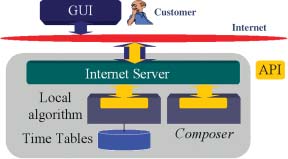 Figure 29. DELFI schematic architecture.
Figure 29. DELFI schematic architecture.
Total project funding is $1.5 million. Funding is provided to assist states/operators to adapt their systems to the standard interface. The interface is freely available to EU and other service providers. A few years ago, transit operations shifted from federal responsibility to a regional responsibility. The Ministry annually provides $7.5 to $8 billion to states for transit. DELFI will use an Internet backbone. Deutsche Bahn will host the meta-data server and will likely take a lead operating/leadership role in the system.
The scan team attended a presentation about the status of telematics in public mass transit in Germany. The VDV is an Association of Transport Operators like the APTA. The organization has 550 operators as members and is responsible for 94 percent of the passenger volume in Germany. VDV has 8.9 billion users per year. Fifteen percent of the public uses transit. A survey showed that 17 percent of those surveyed claim they do not use public transportation because they do not have information about it.
 Figure 30. Use of public transportation in Berlin.
Figure 30. Use of public transportation in Berlin.
Traveler information is considered part of transit service standards. The type of dissemination methods currently used are print media, customer center/mobility centers, shops at stations or malls, mobile phones, WAP, SMS, a few transit providers (Dresden has real-time information available), and call centers.
The information available is traveler information, complaint management, and ticket sales for the German railway.
The trend is to move to providing 24-hour information. In Berlin, Berlin Transport provides one central telephone system for public transport in Berlin. The telephone number is "19449." This number also is used in other cities. It is a 24/7 service where the caller is forwarded only once. All calls are answered within 20 seconds. Eighty percent of callers will receive their requested information immediately. The service receives 3,000 calls per day (1 million calls annually). The call center has 39 call stations and 120 staff. Operating costs are $5 million annually. The cost per call is $7.50, although some private call centers operate at $3 per call (Lufthansa is $5 per call).
In terms of electronic media, CD-ROMs are available for purchase, and information is available on the Internet at www.bahn.de and www.bus-und-bahn.de. People are accessing web information at the rate of 200,000 hits per day. Approximately 1,000 tickets are sold per day via the Internet. Kiosks will be installed where the operator website can be accessed for free and other websites may be accessed for a fee.
Surveys indicated that customers want the following information:
At stops, the static information is provided, but real-time information is new and growing. In-vehicle information includes next-stop/connection information that is provided visually and in audio. Television broadcasting is coming to the underground and it has advertising possibilities, but no sound will be allowed. It will mainly be for entertainment, information, and advertisements. Transport operators will have to pay for their advertisements on these screens. The ultimate goal is a self-sustaining service.
When consumer satisfaction surveys were conducted, they showed a slight improvement in customer satisfaction with Berlin Transport, from 3.2 in 1999 to 3.1 in 2000 (1 = excellent, 5 = poor). The emphasis was placed on better data, not necessarily on better delivery. With regard to traveler information, the satisfaction rating was 74 percent. There was a perception of a lack of staff to answer questions, i.e., the human element was lacking.
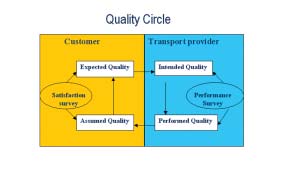 Figure 31. Customer satisfaction.
Figure 31. Customer satisfaction.
We observed several trends: the Internet is reducing print media and CD-ROM sales, and customers like next-stop information and prefer intermodal information. Traveler information is considered a core product of a good transit service.
Demand for mass transit declined through the mid-1990s, but has been growing since then by 1.5 to 2 percent annually. With the "19449" phone number, the goal is to provide a nationwide interconnection. This has not yet been realized because of switching issues. Call centers also respond to e-mail inquiries.
The RDS-TMC broadcasts information at 1,200 bits/second at 30 to 60 messages per minute. The RDS-TMC is based on standards and encoding (only 37-bit data stream per event). One issue with data quality is that there are more messages than can be broadcast, which leads to competing messages requiring message priority. It has been proved that dynamic navigation sells much better than does static navigation systems. Current barriers to deployment include the fact that the information center to broadcast stations network has not been completed in some states and that the information chain is not automated in all states.
Available ATIS services include VMS that provide on-the-spot information, RDS-TMC that provides early and advanced information, and new telematics services that focus on individual services. RDS-TMC is installed in most countries in Europe. Radio broadcasters were resistant at first, but then it was agreed that the stations could put their call letters on the navigation system in the vehicles. The business model is that everybody pays his or her own costs. The federal government did buy the location codes to make them available in the public domain.
The City of Berlin has a population of 3.5 million people driving 1.3 million cars on 5,200 km of roads. Railway construction continues, and traffic demand is increasing. Financial, environmental, and political restrictions have made it difficult to meet demand. It was decided that new strategies such as mobility management are needed to keep up with demand.
The VMZ Berlin project, led by Siemens AG and Daimler Chrysler, is the development of mobility management in Berlin. The goal is to make a profit from selling traffic data.
The city has definite goals regarding traffic/transportation management. These goals include:
As a result, Berlin entered into a 10-year public-private partnership with the Daimler Chrysler/Siemens-led consortium to provide new detection devices, a state-of-the-art TMC, and value-added user services called "The Berlin Model." Development started in November 2000, and the system will be operational in 2003. The partnership is similar to some of the experiences explored in the United States. To be successful, the system must be able to integrate both "hard" and "soft" measures. The city defined hard measures to be controlled by the public sector and soft measures to be controlled by the private sector.
Hard measures include bus lanes, bike lanes, access control, and parking restrictions. Only public authorities can implement hard measures. Soft measures include traveler information and new user services and require coordinated information exchange. They do not need to be performed by public authorities and, in fact, can be better administered by the private sector on the condition that it can make a profit.
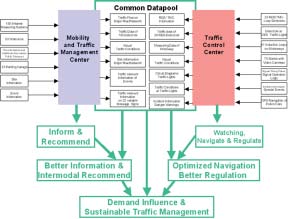 Figure 34. Cooperation in the traffic management center.
Figure 34. Cooperation in the traffic management center.
However, it is accepted that the private sector cannot be profitable if it is required to pay all capital and operating costs.
Berlin is the first city in Germany with a public-private partnership (The Berlin Model). The partnership covers capital costs (13.8 million Euros). The city owns the system and will provide start-up funding/operating subsidization for the first 2 years (2.5 million Euros) to help the private sector reach its goal. The VMZ will provide 10 years of operating cost.
 Figure 35. Mobility information and advice.
Figure 35. Mobility information and advice.
The city provides all its data from the TCC to the private partner at the TMC. The city is also developing the TCC (public) at the same time, which covers the hard measures and allows for better management and control of road traffic.
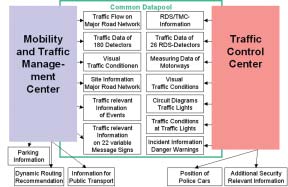 Figure 36. VMZ common datapool.
Figure 36. VMZ common datapool.
The TMC and TCC are connected and have a common datapool. All data need to come back to the TCC and be available to the public agencies. Value-added services developed by the TMC would not be available to the agencies. TCC data must be available to everyone--even if another private group comes in. The TMC information will not be available to all. The TMC/TCC share workspace and some equipment. The city would prefer that the TMC be a solely private operation (i.e., with private money), but this was not realistic, so the public-private partnership was created. The TMC will install new equipment that will be maintained by VMZ, which will cover all maintenance costs. Data quality is specifically addressed in the contract. The TMC will provide on-line itinerary/trip planning and traffic forecasting to the users. The overall result of VMZ (TMC) and the TCC combined will be to influence demand and provide sustainable traffic management. Public transport partnerships are still being developed.
The contract contains no profit- or revenue-sharing provisions. The city would prefer that VMZ put profits into new user services or system enhancements. VMZ must provide the TCC with free data and information and make sure that the TMC is state of the art. After 10 years, if the contract is not renewed, VMZ must turn over a "modern" TMC to the City of Berlin. The VMZ is deploying detection devices where there are none--mainly on arterials and not on the motorways. The VMZ must provide information from the motorway and public transport systems as well. The request for proposals and subsequent contract focused on functional specifications and quality of data, not on technical specifications.
The contract term is 10 years; if it were longer, the technology changes would be too numerous. The term couldn't be shorter because the real operating time is 7.5 years.
The TMC will help to achieve the political goal of increasing public transport ridership.
The procurement process started with a request for information, to which eight interested parties responded. This was followed by a request for proposals, and four teams submitted proposals. Two consortiums were then shortlisted for negotiations. The business model is based on business-to-business (B2B) generated revenues.
Private-sector organizational control of VMZ is held by Daimler Chrysler AG Services (51 percent) and Siemens AG (49 percent). VMZ hopes that the main public transport company in Berlin will become a shareholder at the end of 2001. The VMZ is primarily deploying infrared detectors on arterials. From the financial model, the expected operating costs are higher than the capital costs (60 million Deutsch marks over 10 years versus 30 million Deutsch marks in capital). The VMZ believes it will cooperate and eventually share data/information with other cities and states. Currently, VMZ has agreements with one other city and the adjacent motorways.
The system will be set up 6 months earlier than the agreed-upon date. Internet services started in July 2000, and the full system should be operational in 2002.
The contract has a two-phase deployment. Phases 1 and 2 comprise 500 km of roads. There may be a Phase 3 to extend the network, but it is not in the current contract.
The VMZ in Europe is known as "The Berlin Model"--others may decide to copy it. According to this model, the government has to give some responsibility to the private sector. An option considered in Cologne is for the public sector to become a shareholder in the operating company.
Data collection consists of the infrared traffic eye. There are 180 infrared detectors on arterials, 25 in parking garages, and traffic information on 25 VMSs in Berlin. Parking garage information is provided by one of the partners, BMW, which is in charge of this element of the project. The infrared traffic eye contains a solar panel and cabinet and can be placed on many types of structures. It provides vehicle speed and length and needs one cabinet for up to six detectors per station.
The data fusion focuses on three functional levels: content, traffic editorial staff, and the service platform of Internet, media, and the provision of data for services. The system uses a geographic information system with road data (where available) and VMS locations. It has clickable icons (i.e., roadworks, traffic count stations) with data behind it. It is Internet Explorer-based, using Concert version 1.1. The trip-planning tool takes dynamic information into account for both public transport and private vehicles.
For data dissemination, VMZ wants to collect and own all information on its website; it does not want to link to others. B2B is the main focus of revenue and requires a sales staff, which is being assembled. There is no escape clause--VMZ is obligated to operate all free services (to customers) for 10 years.
Data sources include public transport, parking garages, detection devices, RDS-TMC, floating car data, and others. The content will focus on public transport users and personal automobiles. The services that will be provided are business to customer (B2C), with other partners; B2B, the main focus of revenue; and collective services (free of charge), for example, via the Internet and VMS.
Customer access will be through the Internet using a PC or PDA, GSM, GRPS/WAP mobile telephones, print media, TV, radio, telephone, fax, and information panels (VMS).
Marketing and sales will require a sales force, and staff hiring is currently under way. Marketing and sales personnel will work on a salary plus commission.
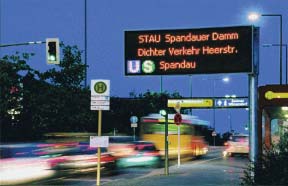 Figure 40. Multicolor dynamic information panel.
Figure 40. Multicolor dynamic information panel.
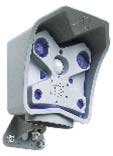
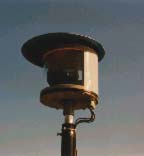
The contractual services include:
The Internet service is available at www.vmzberlin.de, and the service is free. Customers are anonymous and make their own interpretation of the information available. Only pretrip information is available. Origin-destination routing is available by choosing either car or public transport, and then one receives directions and a map. The results are travel time based on historic patterns and police reports. In the future, travel time will also consider information collected by VMZ detectors. Intermodal routing will soon be available. This capability will enable comparisons of transit versus car travel times. VMZ will be adding airport arrival and parking information. Revenue will be through "upsell" services to consumers and sponsors on the website. Two types of web cams are used.
Future developments include:
VMZ will create a standard interface where necessary and will make its data feeds available. Currently, it is using XML, SOAP protocol interfaces on data collection and data feeds.
With regard to intellectual property, the City of Berlin can use the data collected and system provided by VMZ in Berlin. Daimler Chrysler and Siemens can sell the data and market the system elsewhere. The city financed the system and it will receive the system, including software, hardware, etc., at the end of the contract (10 years). The city does not have any interest in marketing the system.
The system is organized into three phases: design, deployment, and operations. The framework to design the system is the task of VMZ, because the city wants to receive the correct/desired services and results--it did not want to focus on technical specifications.
| << Previous | Contents | Next >> |